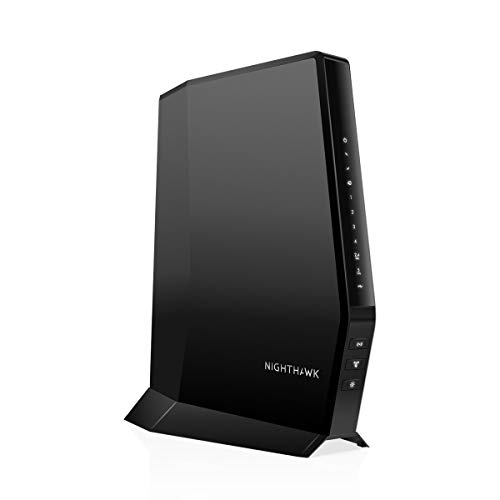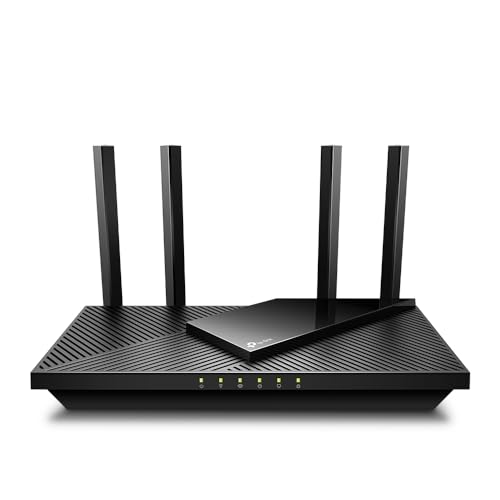
How to Connect Your WiFi Modem to Your Smart TV: A Step-by-Step Guide
Recommended Product:
Connecting your smart TV to your WiFi network is a crucial step to unlocking its full potential. Whether you’re streaming your favorite shows, playing online games, or browsing the web, a stable internet connection is essential. This guide will walk you through the process, ensuring you’re connected and enjoying your smart TV in no time. We’ll cover everything from finding your network name and password to troubleshooting common connection issues.
Important Note: This guide assumes your smart TV has built-in WiFi capabilities. If your TV only has an Ethernet port, you’ll need a wired connection to your modem/router.
Step 1: Locate Your WiFi Network Name (SSID) and Password
Before you begin, you need the credentials for your WiFi network. This information is usually found on a sticker on your modem or router. Look for the SSID (Network Name) and Password (Network Key or WPA/WPA2 Key). Write these down – you’ll need them!
Step 2: Access Your Smart TV’s Network Settings
The exact steps for accessing network settings vary slightly depending on your TV’s manufacturer and model. However, the general process is similar:
- Power on your Smart TV.
- Locate the Settings menu. This is often represented by a gear icon, a cogwheel, or the word “Settings.”
- Navigate to the Network settings. You might see options labeled “Network,” “Wireless,” “Wi-Fi,” or “Internet.”
- Select “Add Network” or a similar option. This initiates the process of connecting to a WiFi network.
Step 3: Select Your WiFi Network
Once you’re in the network settings, you should see a list of available WiFi networks. Find the name of your WiFi network (SSID) and select it.
Recommended Product:
Step 4: Enter Your WiFi Password
Your TV will now prompt you to enter your WiFi password. Carefully type the password from the sticker on your modem/router. Be mindful of uppercase and lowercase letters. Most TVs have an on-screen keyboard to assist with this.
Step 5: Confirm the Connection
Once the password is entered, your TV will attempt to connect to the network. This may take a few seconds or minutes. You’ll usually see a confirmation message on the screen once the connection is successful.
Step 6: Test Your Connection
After successfully connecting, open a streaming app or website to test your internet connection. If everything is working correctly, you should be able to stream without buffering or significant lag.
Troubleshooting Common Connection Issues:
- Incorrect Password: This is the most common reason for connection failures. Double-check for typos, including capitalization.
- Weak Signal: If your TV is far from your modem/router, the signal might be too weak. Try moving your TV closer or consider using a WiFi extender to boost the signal.
- Network Interference: Other electronic devices can interfere with your WiFi signal. Try power cycling your modem and router (unplug them, wait 30 seconds, and plug them back in).
- Outdated Firmware: Ensure your TV’s firmware is up to date. Check your TV’s settings for firmware updates.
- Modem/Router Issues: If you continue to have problems, try restarting your modem and router. If the issue persists, contact your internet service provider.
Tips for a Successful Connection:
- Use a 5 GHz network if available: 5 GHz networks generally offer faster speeds and less interference than 2.4 GHz networks.
- Keep your router and modem updated: Regular updates often include security patches and performance improvements.
- Position your router strategically: Place your router in a central location to ensure optimal signal coverage throughout your home.
By following these steps and paying attention to potential issues, you can easily connect your smart TV to your WiFi modem and enjoy a world of entertainment at your fingertips. Remember to be patient and double-check your inputs. Happy streaming!
Recommended Product:
FAQ
Q. My smart TV won’t find my Wi-Fi network. What should I do?
A. First, ensure your Wi-Fi modem is turned on and functioning correctly. Check the lights on the modem; a solid or flashing light usually indicates it’s working. Then, make sure your TV is within range of your Wi-Fi router. Obstacles like walls and furniture can weaken the signal. If the problem persists, try restarting both your modem and TV. Also, double-check that you’ve entered the correct Wi-Fi password on your TV. Incorrect password entry is a very common reason for connection issues. Finally, if your TV still doesn’t detect the network, your Wi-Fi network might be hidden. If this is the case, you will need to manually enter the network name (SSID) and password.
Q. What if my smart TV doesn’t have a built-in Wi-Fi adapter?
A. Many older smart TVs lack built-in Wi-Fi. In this case, you’ll need a Wi-Fi adapter. These are usually USB devices that plug into a USB port on your TV. Make sure the adapter is compatible with your TV model before purchasing. Once connected, follow the on-screen instructions to configure the Wi-Fi connection.
Q. My smart TV is connected to the Wi-Fi, but I have no internet access. What could be wrong?
A. Several things could cause this. First, verify that your internet connection is working correctly by trying to connect another device (like a phone or laptop) to your Wi-Fi. If other devices have internet access, the problem lies with your TV’s configuration. Try restarting your TV, modem, and router. Check your TV’s network settings to ensure the connection is still established and that the IP address and DNS settings are correct (usually obtained automatically). If the problem continues, contact your internet service provider or check for firmware updates for your TV.
Q. How do I improve my Wi-Fi signal strength for better streaming on my smart TV?
A. Weak Wi-Fi signals lead to buffering and poor streaming quality. To improve the signal, move your TV closer to the router. Avoid placing the router behind furniture or in a location with many obstacles. Consider using a Wi-Fi extender or mesh network to boost the signal in areas with weaker coverage. You might also want to check for interference from other electronic devices. Finally, ensure that your router’s firmware is up-to-date.
Q. My smart TV keeps disconnecting from the Wi-Fi. Why is this happening?
A. Intermittent Wi-Fi disconnections can stem from several sources. A weak signal is a common culprit (see previous question). Interference from other electronic devices (microwaves, cordless phones) can disrupt the connection. A faulty Wi-Fi adapter (if using one) could also be the cause. Outdated firmware on your TV or router can also cause instability. Try restarting all your devices and checking for firmware updates. If the problem persists, it’s possible there’s a hardware issue either with your TV or your network equipment.
Q. Can I connect my smart TV to the internet using an Ethernet cable instead of Wi-Fi?
A. Yes, many smart TVs offer an Ethernet port for a wired internet connection. This generally provides a more stable and faster connection than Wi-Fi, especially if your Wi-Fi signal is weak or unreliable. Simply connect one end of the Ethernet cable to your TV’s Ethernet port and the other end to your router or modem. Your TV should automatically detect the connection.
Related Articles
How Can I Boost My Spectrum Wifi Signal
How Can I Boost My Spectrum Wifi Signal? A Step-by-Step Guide Recommended Product: Mini Cell Signal Booster for Verizon, AT&T, T-Mobile| Up to 150…
Can You Use A Dstv Dish For Internet
Can You Use Your DStv Dish for Internet? Unlocking the Potential of Your Satellite Dish Recommended Product: Dish Network 1000.2 Dish 110, 119, 129 Sa…
What is the Best WiFi Router for Streaming
Streaming is basically a way of live now, right? Whether you’re glued to a 4K movie marathon, hopping on a video call, or battling it out in an online…



Leave a Reply
You must be logged in to post a comment.